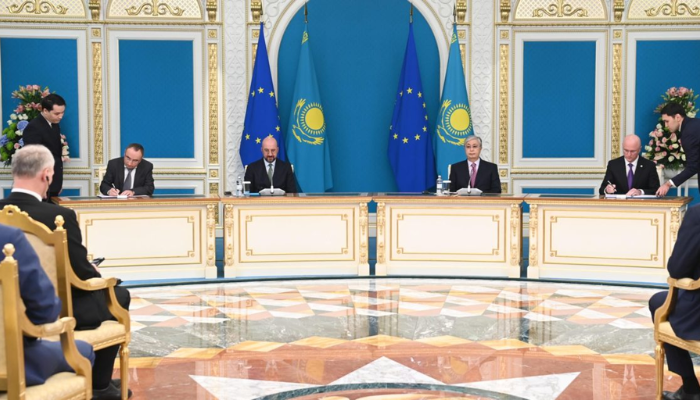An organisation affiliated with Svevind has agreed to invest up to $50 billion in a Caspian Sea project that has the potential to create up to 2 million tonnes of green hydrogen annually. Meanwhile, Stellantis has disclosed ambitions to develop light commercial hydrogen vehicles in large quantities. (Svevind Invests in 20 GW of Electrolysis )
A deal was inked by the government of Kazakhstan and Hyrasia One, a Svevind subsidiary, to invest in one of the biggest pure green hydrogen factories in the world. On the steppes of southwest Kazakhstan, around 40 GW of wind and PV will provide 120 TWh of electricity annually. With this power, a 20 GW industrial park of electrolyzers will be able to create up to 2 million tonnes of green hydrogen annually along the Caspian Sea shore.
In the Mangystau region, production is expected to begin in 2030. The business will make its ultimate investment choice for the project, which has been estimated to be worth between $40 billion and $50 billion, in 2026.
Chinese scientists have decoupled water electrolysis for independent hydrogen and oxygen evolution, resulting in a solar-to-hydrogen (STH) system efficiency of 14.4%. Each half-reaction driven by the decoupling needs a lower voltage to operate. The researchers created a decoupled acid water electrolyzer and an amphoteric water electrolyzer, respectively, by adding sodium nickel hexacyanoferrate (NaNiHCF) as the redox mediator.
“The output voltages of the perovskite solar cell (PSC) matched the needed voltages for the hydrogen or oxygen evolution processes.” The team used a single crystal of Formamidinium Lead Iodide (FAPbI 3) and combined a PSC based on FAPbI 3 with a decoupled amphoteric water electrolyzer, which had an efficiency of 18.77%. The team reported their findings in the article “Decoupled water electrolysis driven by 1 cm2 single perovskite solar cell yielding a solar-to-hydrogen efficiency of 14.4%,” which was just released on ChemsSusChem. “A solar-to-hydrogen (STH) efficiency of 14.4% was achieved, which outperformed previously reported PSCs driven water electrolysis cells,” they wrote.
Stellantis has made plans to mass construct fuel cell versions of light commercial cars from Peugeot, Citroen, and Opel that run on hydrogen. The hydrogen-powered cars will be put together in France.
Results of engine tests conducted on Scania’s heavy-duty vehicle applications using Westport’s High-Pressure Direct Injection (HPDI) fuel system have been released by Westport Fuel Systems. The first test findings, according to Westport Fuel Systems, “demonstrate performance with a peak Brake Thermal Efficiency of 51.5% complimented by 48.7% during road load conditions, all with engine-out NOx similar to the standard diesel engine, which is compatible with Euro VII and EPA27.” The HPDI technology uses hydrogen in an internal combustion engine as an alternative to fuel cells.
A memorandum of understanding between NanoSun and Hydrogen Systems paves the way for the delivery of environmentally friendly hydrogen refueling options to central Europe.
According to research released by the Dubai government, the United Arab Emirates and the United Kingdom might form a strong alliance to promote the green hydrogen industry.


